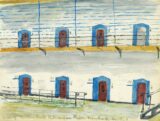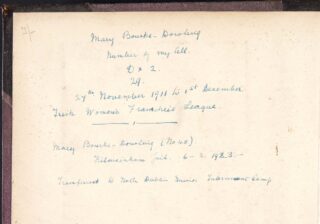
In their campaign for voting rights, the suffragettes often took part in militant protests. In November 1911, Mary Bourke-Dowling was amongst several hundred suffragettes arrested in London for smashing windows across the city. She threw stones at the windows of the British War Office, though they failed to break. She was tried at Bow Street Police Court on 27 November 1911 and sentenced to 5 days imprisonment in Holloway Jail, alongside several other Irishwomen. At their trials the suffragettes claimed that such destruction was the only form of protest available to them.
Upon her release from prison in December 1911, Mary Bourke-Dowling returned to Dublin. At a special meeting of The Irish Women’s Franchise League to welcome back the released prisoners, she was presented with a medal engraved with the League’s statement of intent: ‘From Prison to Citizenship’. This medal, from which the exhibition takes its name, is displayed to the public for the first time.
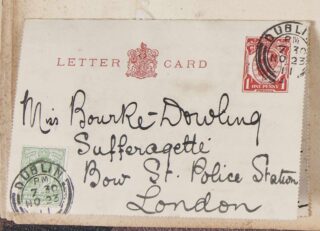
In 1918, the Representation of the People Act was passed. This gave women over 30, who also had property rights or a university education, the right to vote. Women all over Ireland cast their vote for the first time in the December 1918 General Election.
Mary Bourke-Dowling later joined the republican women’s organisation Cumann na mBan and took the Anti-Treaty side in the Irish Civil War. In August 1922, she lost her job as a writing assistant in the Civil Service following her refusal to sign a declaration of fidelity to the Irish Free State government. She was later arrested in February 1923, and spent over six months imprisoned in Kilmainham Gaol and the North Dublin Union. As a member of the Prisoners’ Council, Bourke-Dowling drew on her experiences as a suffragette and advised her fellow prisoners on how best to resist the authorities. She was released from Kilmainham Gaol in September, 1923.
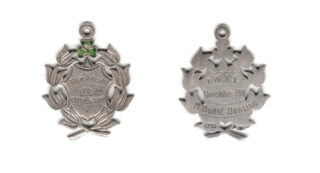
The Kilmainham Gaol Archive holds some very interesting items associated with Mary Bourke-Dowling, most notably, a scrapbook created by her to preserve documents and souvenirs associated with her imprisonment in Holloway and Kilmainham Gaols. A letter of support from her brother, Joseph, and addressed to ‘Miss Bourke-Dowling, Sufferagette (sic), Bow Street Police Station, London’ is of particular interest. Other items of interest associated with this remarkable woman include sketches and watercolours painted by Bourke-Dowling whilst imprisoned during the Civil War.
Unfortunately, little is known about Mary Bourke-Dowling’s political life after she left Kilmainham Gaol in 1923. She spent years fighting to be reinstated to her position in the Civil Service and was finally successful in 1932. She married William H. Lewers in 1933 and as a result may have had to leave her job once more. A ‘marriage bar’ was introduced in the 1930s which made it compulsory for female civil servants to stop working once married. This was not repealed until 1973. Mary Bourke-Dowling died at her home in Clontarf in July 1944.
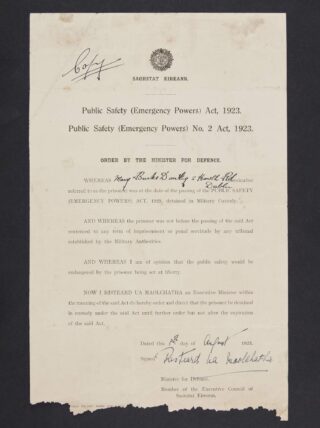

About the Author
Aoife Torpey holds a degree in History and English Literature from Trinity College Dublin, and has recently completed an MA in Museum Studies with the University of Leicester. She has worked in Kilmainham Gaol Museum since 2015, where she looks after the Museum’s wonderful collection of historical objects.
